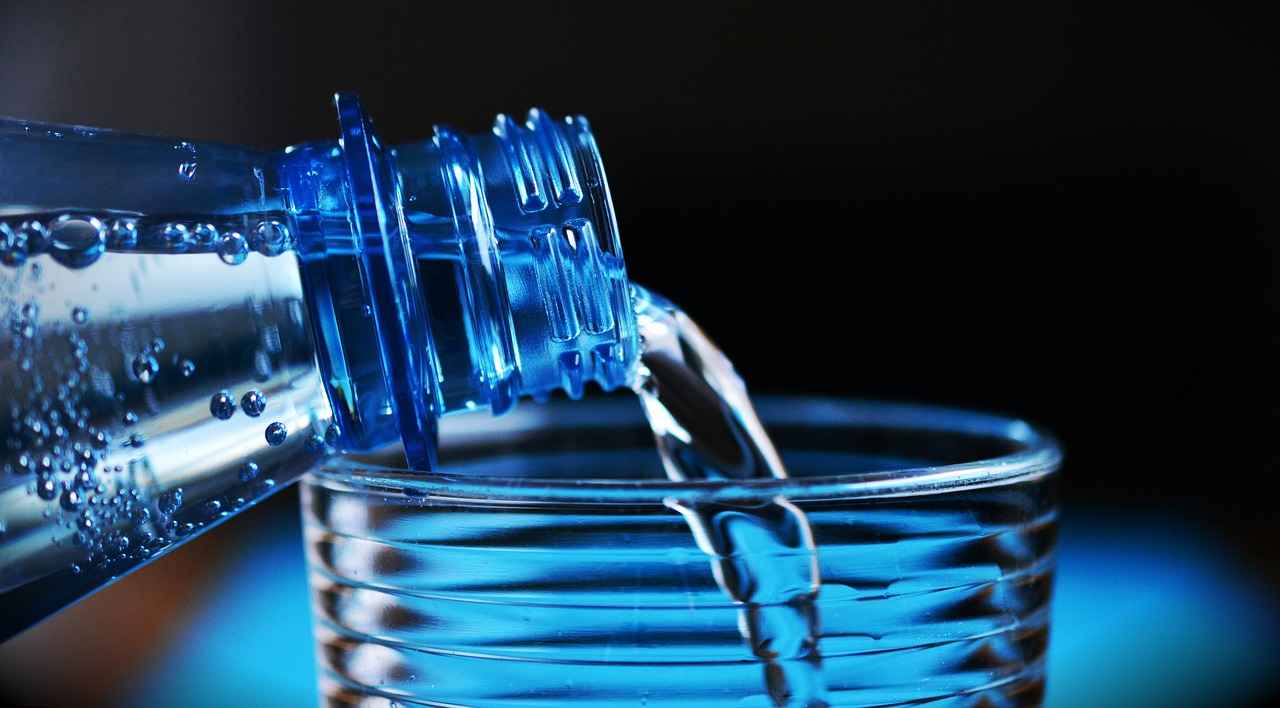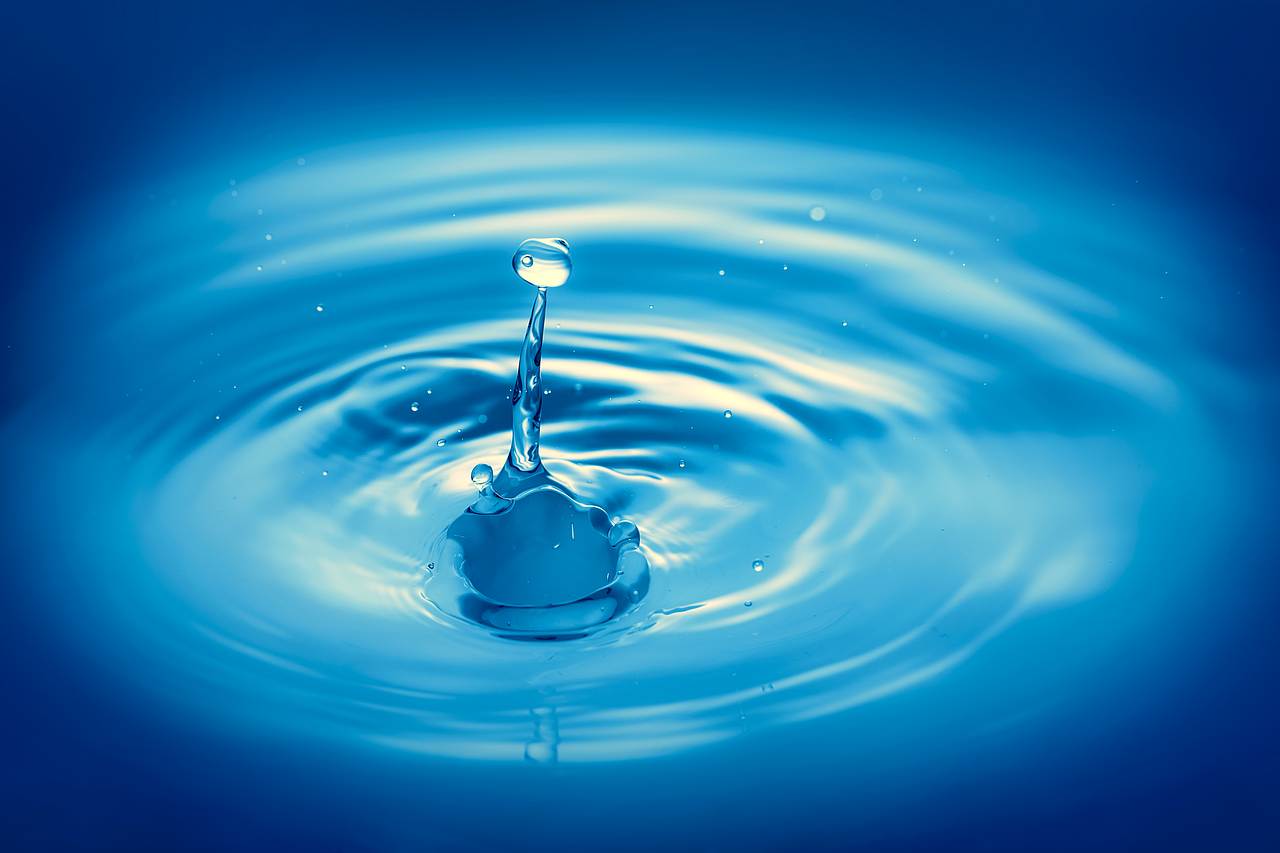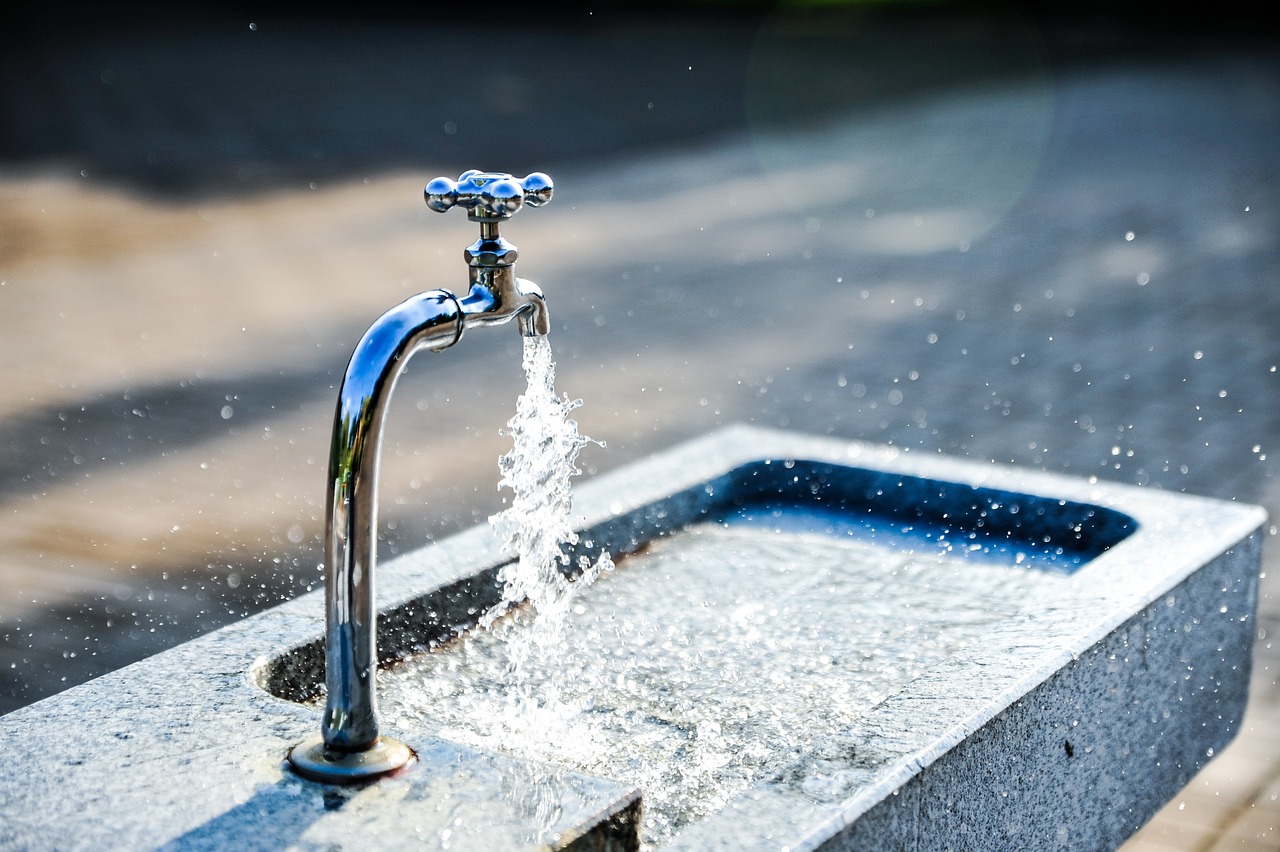This article delves into the benefits of a two-day water fast, offers practical tips for achieving success, and addresses frequently asked questions to guide you through this fasting method effectively.
What is a Two-Day Water Fast?
A two-day water fast involves abstaining from all food and consuming only water for a continuous period of 48 hours. This fasting technique is becoming increasingly popular due to its potential health benefits and straightforward approach.
Health Benefits of a Two-Day Water Fast
Engaging in a two-day water fast can provide a range of health advantages:
- Improved Metabolic Health: Short-term fasting has been shown to enhance insulin sensitivity and promote fat oxidation, which can lead to better metabolic health and a reduced risk of chronic diseases.
- Enhanced Mental Clarity: Many individuals experience heightened mental clarity and focus during fasting periods, likely due to increased ketone production and reduced inflammation in the brain.
- Weight Loss: A two-day water fast can create a caloric deficit and promote fat utilization, making it an appealing option for those looking to shed extra pounds.
Preparing for a Two-Day Water Fast
Proper preparation is key to a successful water fast:
- Gradual Reduction of Food Intake: In the days leading up to the fast, gradually reducing your food intake can help minimize cravings and prepare your body for the fasting period.
- Staying Hydrated: Ensuring adequate hydration before starting the fast is essential, as it helps your body adjust and can reduce feelings of hunger during the fasting period.
Tips for Success During the Fast
Implementing practical strategies can enhance your experience during a two-day water fast:
- Listening to Your Body: Pay close attention to your body’s signals. If you feel unwell, it’s crucial to reassess your fasting approach and consider breaking the fast if necessary.
- Engaging in Light Activities: While fasting, light activities such as walking or yoga can help maintain energy levels and distract from hunger without overexerting yourself.
Post-Fast Eating Guidelines
How you break your fast is just as important as the fasting period itself. Following proper guidelines can help prevent digestive discomfort and maximize benefits:
- Start with Light Foods: After a two-day water fast, begin with easily digestible foods such as fruits or broths to reintroduce nutrients without overwhelming your digestive system.
- Avoiding Heavy Meals: It’s advisable to avoid heavy or rich meals immediately after fasting, as they can lead to gastrointestinal distress and negate some benefits of the fast.
In summary, a two-day water fast can be a beneficial practice for those looking to improve their metabolic health, enhance mental clarity, and facilitate weight loss. By preparing adequately, listening to your body, and breaking your fast correctly, you can navigate this fasting method effectively and safely.

What is a Two-Day Water Fast?
A two-day water fast is a health practice that involves abstaining from all food and consuming only water for a period of 48 hours. This method of fasting is becoming increasingly popular for its simplicity and potential health benefits. Many individuals are drawn to this fasting technique as a means of detoxification, weight management, and mental clarity enhancement.
During a two-day water fast, participants are encouraged to drink water exclusively, which allows the digestive system to rest and may trigger various health benefits. The fast typically begins after the last meal, and the individual continues without food until the end of the 48-hour period. This practice can be a valuable tool for those looking to reset their eating habits or explore the effects of fasting on their body.
- Enhanced Metabolic Function: Research suggests that short-term fasting can improve insulin sensitivity, which may lower the risk of type 2 diabetes.
- Increased Mental Clarity: Many individuals report sharper focus and improved cognitive function during fasting, likely due to the brain’s reliance on ketones for energy.
- Weight Loss: A two-day water fast can create a caloric deficit, leading to weight loss as the body utilizes stored fat for energy.
Preparation is key to a successful fasting experience. Here are some essential tips:
- Gradual Food Reduction: In the days leading up to your fast, gradually reduce your food intake to help your body adjust.
- Stay Hydrated: Ensure you are well-hydrated before starting the fast to help mitigate hunger pangs and maintain energy levels.
Implementing effective strategies can make your two-day water fast more manageable:
- Listen to Your Body: Pay attention to how you feel; if you experience any adverse effects, consider breaking the fast.
- Engage in Light Activities: Activities like walking or gentle yoga can help keep your mind off hunger while maintaining energy levels.
How you reintroduce food after a fast is crucial. Here are some guidelines:
- Start with Light Foods: Begin with easily digestible options like fruits or vegetable broths to gently ease your digestive system back into action.
- Avoid Heavy Meals: Steer clear of rich or heavy foods immediately after fasting, as they can cause discomfort and counteract the benefits of the fast.
In conclusion, a two-day water fast can be an effective way to enhance your health, improve mental clarity, and facilitate weight loss. By preparing adequately, listening to your body, and reintroducing food thoughtfully, you can maximize the benefits of this fasting method.

Health Benefits of a Two-Day Water Fast
Engaging in a two-day water fast can offer a multitude of health benefits that extend beyond mere weight loss. This method of fasting involves abstaining from all food and consuming only water for a period of 48 hours. As more individuals seek to optimize their health through dietary approaches, understanding the advantages of a two-day water fast becomes increasingly important.
One of the most significant benefits of a two-day water fast is the potential for improved metabolic health. Research has shown that short-term fasting can enhance insulin sensitivity, which plays a crucial role in regulating blood sugar levels. By allowing the body to rest from constant digestion, fasting encourages the utilization of stored fat for energy, promoting fat oxidation. This shift not only aids in weight management but also reduces the risk of chronic diseases such as type 2 diabetes and cardiovascular issues.
Many individuals report experiencing enhanced mental clarity during fasting periods. This phenomenon is often attributed to the increased production of ketones, which serve as an alternative energy source for the brain. In addition, fasting may reduce inflammation, contributing to improved cognitive function. The heightened focus and mental acuity reported by many during a water fast can be particularly beneficial for those needing to concentrate on demanding tasks or creative endeavors.
A two-day water fast can be an effective strategy for weight loss. By creating a caloric deficit—where you consume no calories for 48 hours—your body is compelled to tap into its fat stores for energy. This process not only facilitates weight loss but also encourages a shift in body composition. Understanding how this caloric deficit works is essential; during fasting, the body transitions from glucose metabolism to fat metabolism, enhancing fat utilization.
The concept of a caloric deficit is fundamental to weight loss. By not consuming food for two days, the body is forced to use its energy reserves. This natural process can lead to significant fat loss, especially when combined with subsequent healthy eating habits.
When fasting, the body undergoes a metabolic shift. It begins to rely on fat stores for energy, which can enhance fat loss and improve overall body composition. This shift is beneficial not only for weight management but also for metabolic health.
Preparation is key to a successful two-day water fast. Properly preparing your body can minimize discomfort and enhance the overall experience.
In the days leading up to the fast, gradually reducing food intake can help your body adjust. This approach may lessen cravings and prepare you mentally and physically for the fasting period.
Ensuring adequate hydration before starting the fast is vital. Staying well-hydrated can help reduce feelings of hunger and prepare your body for the changes it will undergo during the fasting period.
Implementing effective strategies can significantly improve your experience during a two-day water fast.
It is essential to pay attention to your body’s signals during the fast. If you start to feel unwell, it may be necessary to reassess your approach and consider breaking the fast.
While fasting, engaging in light activities such as walking or gentle yoga can help maintain energy levels and distract from hunger without overexerting yourself.
How you break your fast is just as important as the fasting period itself. Following proper guidelines can help prevent digestive discomfort and maximize benefits.
After completing a two-day water fast, it is advisable to begin with easily digestible foods such as fruits or broths. This approach allows your digestive system to readjust without overwhelming it.
Avoiding heavy or rich meals immediately after fasting is crucial. Consuming such meals can lead to gastrointestinal distress and may negate some of the benefits gained from the fast.
Improved Metabolic Health
Engaging in a two-day water fast can significantly impact your metabolic health. This fasting method, which involves abstaining from all food and consuming only water for 48 hours, is gaining traction as a practical approach to improving overall well-being. One of the most compelling benefits of short-term fasting is its ability to enhance insulin sensitivity and promote fat oxidation, both of which are crucial for maintaining metabolic health and reducing the risk of chronic diseases.
Insulin sensitivity refers to how effectively the body’s cells respond to insulin, a hormone that regulates blood sugar levels. When insulin sensitivity is high, the body can efficiently utilize glucose for energy, preventing excess sugar from accumulating in the bloodstream. Research indicates that short-term fasting can lead to improved insulin sensitivity by lowering insulin levels and allowing the body to utilize glucose more effectively.
During fasting, the body shifts its energy source from glucose to fat. This process, known as fat oxidation, occurs as the body taps into its fat stores for fuel. Enhanced fat oxidation not only aids in weight loss but also supports metabolic health by reducing fat accumulation in the liver and improving lipid profiles. Studies have shown that intermittent fasting can lead to significant reductions in body fat percentage, which is beneficial for overall metabolic function.
Improved metabolic health through short-term fasting can lead to a decreased risk of chronic diseases such as type 2 diabetes, cardiovascular disease, and obesity. By enhancing insulin sensitivity and promoting fat oxidation, fasting helps stabilize blood sugar levels and improve lipid metabolism. This stabilization is essential for preventing metabolic syndrome, a cluster of conditions that increase the risk of heart disease and diabetes.
Fasting triggers hormonal changes that further enhance metabolic health. For instance, levels of human growth hormone (HGH) can increase significantly during fasting, which aids in fat loss and muscle preservation. Additionally, fasting can reduce levels of inflammatory markers in the body, contributing to better metabolic function and overall health.
- Stay Hydrated: Drinking plenty of water during your fast is essential. It helps maintain hydration and can alleviate feelings of hunger.
- Gradual Transition: Before starting your fast, gradually reduce your caloric intake to ease your body into the fasting state.
- Engage in Light Exercise: Incorporating gentle activities like walking or yoga can help maintain energy levels and support metabolic processes.
- Focus on Nutrient-Dense Foods: After breaking your fast, opt for whole, nutrient-dense foods to maximize the benefits of your fasting period.
In summary, a two-day water fast can be a powerful tool for improving metabolic health. By enhancing insulin sensitivity and promoting fat oxidation, this fasting method not only aids in weight loss but also reduces the risk of chronic diseases. With proper preparation and adherence to guidelines, individuals can successfully navigate this fasting approach and reap its numerous benefits.
Enhanced Mental Clarity
During periods of fasting, many individuals experience a remarkable boost in mental clarity and focus. This phenomenon can be attributed to several physiological changes that occur in the body, particularly the increased production of ketones and a reduction in inflammation within the brain.
When the body enters a fasting state, it begins to utilize stored fat as its primary energy source, leading to the production of ketones. Ketones are byproducts of fat metabolism and serve as an alternative energy source for the brain. Research has shown that ketones can provide a more efficient fuel than glucose, enhancing cognitive function and mental performance. As a result, many people report experiencing improved focus, sharper concentration, and greater overall mental clarity during fasting periods.
Furthermore, fasting has been linked to a decrease in inflammation in the brain. Chronic inflammation is associated with various neurological disorders and cognitive decline. By reducing inflammation, fasting may help protect brain health and promote optimal cognitive function. This anti-inflammatory effect can create a favorable environment for enhanced mental performance, allowing individuals to think more clearly and make decisions more effectively.
Additionally, fasting may lead to the production of brain-derived neurotrophic factor (BDNF), a protein that supports the survival of existing neurons and encourages the growth of new neurons and synapses. Increased levels of BDNF have been associated with improved learning and memory capabilities. Therefore, the combination of ketone production and the reduction of inflammation may contribute to the cognitive benefits experienced during a two-day water fast.
It is also essential to consider the psychological aspects of fasting. The act of fasting can foster a sense of discipline and control, which may enhance mental resilience. Many individuals report feeling a heightened sense of clarity and purpose during fasting, as they become more attuned to their thoughts and emotions. This introspection can further clarify their goals and priorities, leading to improved decision-making and productivity.
To maximize the cognitive benefits of a two-day water fast, it is crucial to approach the fasting period mindfully. Here are some practical tips:
- Stay Hydrated: Ensure you drink plenty of water to support overall health and cognitive function.
- Engage in Light Activities: Low-intensity exercises, such as walking or gentle yoga, can help maintain energy levels without causing fatigue.
- Practice Mindfulness: Use this time to meditate or reflect, enhancing your mental clarity and focus.
In summary, the enhanced mental clarity experienced during a two-day water fast can be attributed to increased ketone production, reduced brain inflammation, and psychological factors that promote focus and discipline. By understanding these mechanisms and applying practical strategies, individuals can harness the cognitive benefits of fasting to improve their overall mental performance.

Weight Loss and Fat Loss
A two-day water fast can be an effective method for those seeking to lose weight and improve their overall health. By abstaining from food and consuming only water for a full 48 hours, individuals create a significant caloric deficit, which is essential for weight loss. This fasting approach not only aids in shedding pounds but also promotes the utilization of stored fat as an energy source.
Understanding Caloric Deficit
To grasp the concept of a caloric deficit, it’s important to first understand that weight loss occurs when you consume fewer calories than your body expends. During a two-day water fast, you consume zero calories, prompting your body to tap into its fat reserves for energy. This metabolic shift is crucial for weight loss, as it encourages the body to burn stored fat rather than relying on glucose from food.
The Process of Fat Utilization
When the body enters a fasted state, it undergoes several physiological changes. Initially, it uses glycogen stores for energy, but as these stores deplete, the body begins to metabolize fat. This process, known as lipolysis, involves the breakdown of triglycerides into free fatty acids, which can then be used for energy. This transition not only helps in reducing body fat but also improves body composition.
Benefits Beyond Weight Loss
While weight loss is a primary goal for many, the benefits of a two-day water fast extend beyond just shedding pounds. Research suggests that fasting can lead to improved insulin sensitivity, which is vital for metabolic health. Enhanced insulin sensitivity reduces the risk of developing type 2 diabetes and other metabolic disorders. Additionally, fasting may promote cellular repair processes, such as autophagy, which can contribute to overall health and longevity.
Emotional and Mental Clarity
Many individuals report experiencing heightened mental clarity and emotional stability during fasting periods. This phenomenon is often attributed to the increase in ketone bodies produced when the body shifts from glucose to fat metabolism. Ketones have been shown to have neuroprotective effects, potentially enhancing cognitive function and mood. Thus, a two-day water fast may not only help with physical weight loss but also support mental well-being.
Safety Considerations
Before embarking on a two-day water fast, it’s crucial to consider individual health conditions. People with certain medical conditions, such as diabetes or eating disorders, should consult a healthcare professional before attempting any fasting regimen. Additionally, staying hydrated is essential; drinking adequate amounts of water during the fast helps to mitigate feelings of hunger and supports bodily functions.
Tips for a Successful Fast
- Preparation is Key: Gradually reduce food intake in the days leading up to the fast. This can help your body adjust and minimize cravings.
- Stay Hydrated: Drink plenty of water throughout the fasting period to maintain hydration and curb hunger pangs.
- Listen to Your Body: If you experience severe discomfort or adverse effects, consider breaking the fast or modifying your approach.
- Engage in Light Activity: Activities such as walking or gentle yoga can help maintain energy levels without overexerting yourself.
Breaking the Fast
How you break your fast is just as important as the fasting period itself. It is advisable to start with light, easily digestible foods such as fruits or broths. Heavy or rich meals should be avoided initially, as they can lead to gastrointestinal distress and counteract the benefits gained during the fast.
In summary, a two-day water fast can be a valuable tool for weight loss and fat loss, offering a range of health benefits when approached correctly. By understanding the mechanisms at play and preparing adequately, individuals can maximize their fasting experience and achieve their health goals.
Caloric Deficit Explained
Understanding the concept of caloric deficit is essential for anyone looking to manage their weight effectively. A caloric deficit occurs when you consume fewer calories than your body expends in a given time frame. This deficit forces the body to utilize stored fat for energy, leading to weight loss over time. One effective method to achieve a significant caloric deficit is through fasting, such as the two-day water fast, where individuals abstain from all food and consume only water for 48 hours.
During a two-day water fast, your body undergoes several metabolic changes. Initially, it relies on glucose stored in the liver and muscles for energy. However, as fasting continues, typically after 24 hours, the body starts to deplete these glycogen stores and shifts to fat metabolism. This transition is crucial; it allows the body to begin breaking down fat cells into fatty acids and glycerol, which are then converted into energy. This process not only aids in weight loss but also promotes improved body composition.
When you consume no calories for 48 hours, the body enters a state of ketosis, where it primarily burns fat for fuel. This metabolic switch can lead to enhanced fat oxidation, which is beneficial for those looking to lose weight. Additionally, fasting can improve insulin sensitivity, further supporting weight management efforts. Research suggests that intermittent fasting can lead to significant reductions in body weight and fat mass, making it an appealing option for many.
To maximize the benefits of a two-day water fast, it’s important to prepare adequately. Gradually reducing your caloric intake in the days leading up to the fast can help your body adjust and minimize potential discomfort. Staying hydrated before and during the fast is also crucial, as it can help manage hunger pangs and maintain energy levels.
While fasting, listening to your body is key. If you experience severe discomfort or adverse symptoms, it may be wise to break the fast. Engaging in light activities, such as walking or gentle yoga, can also help keep your energy levels stable and distract from hunger.
After completing a two-day water fast, how you break your fast is just as important as the fast itself. It’s advisable to start with light foods that are easy to digest, such as fruits or vegetable broths. This approach helps reintroduce nutrients without overwhelming your digestive system. Avoiding heavy or rich meals immediately after fasting is also recommended, as these can lead to gastrointestinal distress and counteract some benefits of the fast.
In summary, understanding caloric deficit and how it relates to fasting can be a powerful tool in weight management. By utilizing methods such as a two-day water fast, individuals can tap into their body’s fat stores for energy, leading to effective weight loss and improved metabolic health. With proper preparation and mindful practices during and after the fast, one can enhance their experience and achieve their health goals.
Fat Utilization Process
During fasting, the body undergoes significant metabolic changes that can be beneficial for those seeking to improve their body composition and overall health. One of the most notable shifts is the transition from glucose metabolism to fat metabolism. This process is not only crucial for weight loss but also plays a vital role in enhancing metabolic health.
When the body is in a fasted state, it depletes its glycogen stores, which are the primary source of energy derived from carbohydrates. As these stores diminish, the body begins to seek alternative energy sources. This is where fat metabolism comes into play. The liver converts stored fat into ketones, which become the new fuel for the body, thereby promoting fat loss.
Engaging in a two-day water fast allows the body to effectively tap into its fat reserves. As insulin levels drop during fasting, the body becomes more efficient at mobilizing fat from adipose tissues. This process not only enhances fat loss but also improves overall body composition, as the body begins to utilize stored fat for energy instead of relying on carbohydrates.
Moreover, the increase in ketone production during fasting has been linked to several health benefits. Ketones can enhance brain function and provide a steady energy source, which can lead to improved mental clarity and focus. This shift in energy sources can also contribute to a reduction in inflammation, further supporting cognitive health.
In addition to these metabolic benefits, fasting can help regulate hormones associated with hunger and satiety. For example, levels of ghrelin (the hunger hormone) decrease, while levels of leptin (the satiety hormone) can improve, leading to better appetite control. This hormonal balance is essential for those looking to manage their weight effectively.
Furthermore, the fat utilization process during fasting can also have implications for long-term health. Research suggests that regular fasting may reduce the risk of chronic diseases such as type 2 diabetes and cardiovascular disorders by improving insulin sensitivity and promoting a healthier lipid profile.
To maximize the benefits of fat metabolism during a two-day water fast, it is essential to prepare adequately. Gradual reduction of food intake in the days leading up to the fast can help your body adjust, minimizing cravings and discomfort. Staying hydrated is equally important, as adequate water intake can help manage hunger pangs and support overall bodily functions.
During the fast, it is crucial to listen to your body. If you experience any adverse effects, reassessing your approach may be necessary. Engaging in light activities, such as walking or gentle yoga, can also help maintain energy levels without overexerting yourself.
In conclusion, the fat utilization process during a two-day water fast is a powerful mechanism that can enhance fat loss and improve body composition. By shifting from glucose to fat metabolism, the body not only promotes weight loss but also supports overall health. With proper preparation and mindful practices during the fast, individuals can harness these benefits effectively.

Preparing for a Two-Day Water Fast
Preparing for a two-day water fast is crucial to ensure a smooth and successful experience. Proper preparation not only helps your body adjust to the fasting state but also minimizes the risk of adverse effects that can arise from sudden dietary changes.
Before embarking on this fasting journey, it’s essential to understand that your body will undergo significant changes. Preparation is key to making the transition as seamless as possible. Here are some important steps to consider:
- Gradual Reduction of Food Intake: In the days leading up to the fast, begin to gradually decrease your food intake. This can help your body adapt to the upcoming changes and reduce cravings. Start by eliminating heavy meals and processed foods, focusing instead on lighter, whole food options.
- Stay Hydrated: Hydration is vital before you start your fast. Aim to drink plenty of water in the days leading up to the fast. This will not only keep your body hydrated but also help reduce feelings of hunger once you begin the fast.
- Mind Your Caffeine Intake: If you regularly consume caffeine, consider reducing your intake gradually. Abruptly stopping caffeine can lead to withdrawal symptoms, such as headaches and irritability, which can make your fasting experience more challenging.
- Plan Your Fast: Choose a time for your fast that aligns with your schedule. Avoid periods of high stress or significant social engagements, as these can trigger cravings and make it harder to stick to your plan.
- Set Realistic Expectations: Understand that the first day of fasting may be the most challenging. Be prepared for potential hunger pangs and fatigue, and remind yourself that these feelings are temporary.
Additionally, consider incorporating some light exercise into your routine before the fast. Activities such as walking or gentle yoga can help your body adjust and may even assist in reducing stress levels.
Another important aspect to consider is your mental preparation. Fasting can be as much a mental challenge as it is a physical one. Practice mindfulness and meditation techniques to help you stay focused and calm during the fast. This will not only aid in your overall experience but also help you manage any discomfort that may arise.
As you approach the day of your fast, ensure that you have a clear plan in place for how you will handle cravings and distractions. Having a strategy can help you stay committed and focused on your goals.
In summary, proper preparation for a two-day water fast involves a combination of physical and mental readiness. By gradually adjusting your food intake, staying hydrated, and setting realistic expectations, you can help ensure that your fasting experience is both successful and beneficial. Remember, the goal is to listen to your body and approach the fast with a positive mindset.
Gradual Reduction of Food Intake
When preparing for a two-day water fast, one of the most effective strategies is the . This approach allows your body to adapt to the upcoming fasting period, minimizing cravings and potential discomfort. The process of tapering your food consumption can significantly enhance your fasting experience.
To begin, it’s advisable to start reducing your food intake about two to three days prior to the fast. This gradual approach helps your body adjust and can ease the transition into a state of fasting. Here’s how you can implement this:
- Day 1: Begin by eliminating processed foods and sugary snacks. Focus on whole foods such as fruits, vegetables, and lean proteins. This helps your body start the detoxification process.
- Day 2: Reduce your portion sizes. If you typically consume three meals a day, consider cutting back to two smaller meals. This will help your body get accustomed to less food.
- Day 3: On the final day before your fast, aim to consume only one light meal, such as a salad or a smoothie. This will prepare your digestive system for a complete break from food.
During this period of reduction, it’s also crucial to stay hydrated. Drinking plenty of water not only keeps you hydrated but can also help curb feelings of hunger. Herbal teas can also be a soothing option to include in your hydration routine.
Another important aspect of preparing for a fast is to pay attention to your body’s signals. If you feel overly hungry or fatigued during the reduction phase, consider listening to your body and adjusting your intake accordingly. It’s essential to maintain a balance that feels comfortable and sustainable.
In addition to reducing food intake, incorporating light physical activity can be beneficial. Activities such as walking or gentle yoga can help you maintain energy levels and distract from any cravings you may experience. Engaging in light exercise can also promote a sense of well-being, which is particularly helpful as you approach the fasting period.
As you prepare for your two-day water fast, remember that the goal is to create a smooth transition. By gradually reducing your food intake and staying mindful of your hydration and activity levels, you set yourself up for a more successful fasting experience. This preparation not only helps in minimizing cravings but also enhances your overall mental and physical readiness for the fast.
Ultimately, the gradual reduction of food intake is a critical step in the fasting process. It allows your body to adjust naturally and can lead to a more positive fasting experience. By following these guidelines, you can embark on your two-day water fast with confidence and clarity.
Staying Hydrated Before the Fast
Staying hydrated before the fast is crucial for a successful two-day water fasting experience. Proper hydration not only prepares your body for the fasting period but also significantly influences how you feel during those 48 hours. By ensuring that you are adequately hydrated, you can help your body adjust to the absence of food more smoothly.
When you begin a fast, your body undergoes several changes. It shifts from using glucose as its primary energy source to utilizing stored fat. This transition can sometimes lead to feelings of hunger or discomfort. However, being well-hydrated can mitigate these sensations. Water plays a vital role in regulating bodily functions, and when you drink enough before starting your fast, it can help suppress appetite and reduce the intensity of cravings.
Here are some practical tips for staying hydrated before your two-day water fast:
- Increase Water Intake Gradually: In the days leading up to your fast, gradually increase your water consumption. Aim for at least 8-10 cups of water daily to ensure your body is well-prepared.
- Incorporate Hydrating Foods: Include fruits and vegetables with high water content in your meals. Options like cucumbers, watermelon, and oranges can contribute to your hydration levels.
- Avoid Dehydrating Beverages: Limit or eliminate caffeine and alcohol consumption before the fast, as these can lead to dehydration. Instead, opt for herbal teas or flavored water.
- Monitor Your Hydration: Pay attention to the color of your urine. A light yellow color typically indicates good hydration, while a darker shade suggests you need to drink more water.
Another aspect to consider is the timing of your last meal before the fast. Consuming a well-balanced meal that includes protein, healthy fats, and fiber can help keep you satiated and hydrated. Foods rich in these nutrients can slow digestion and provide lasting energy, making the transition into fasting smoother.
Furthermore, staying hydrated can support various bodily functions that are essential during fasting. For instance, hydration aids in maintaining electrolyte balance, which is vital for muscle function and overall health. It also helps with detoxification processes, allowing your body to eliminate waste more effectively.
In summary, ensuring adequate hydration before starting your two-day water fast is not just a recommendation; it is a fundamental step in preparing your body for fasting. By following these hydration strategies, you can enhance your fasting experience, reduce feelings of hunger, and set the stage for a successful fast. Remember, the better prepared you are, the more likely you are to achieve your fasting goals.

Tips for Success During the Fast
Embarking on a two-day water fast can be a transformative experience, but it also presents unique challenges. To ensure that your fasting journey is both manageable and effective, implementing practical strategies is essential. Below are some tips designed to enhance your fasting experience.
- Stay Hydrated: While it may seem obvious, maintaining hydration is crucial during your fast. Aim to drink at least 2-3 liters of water daily. This not only helps to stave off hunger but also keeps your body functioning optimally.
- Mind Your Mindset: Mental preparation is key. Approach your fast with a positive mindset and set clear intentions. This can help you stay focused and committed throughout the duration of the fast.
- Plan Your Schedule: Choose a time for your fast when you have fewer obligations. This allows you to focus on your body’s needs and minimizes distractions that might tempt you to break your fast.
- Engage in Light Activities: While intense workouts are not advisable, engaging in light activities such as walking or gentle yoga can help keep your spirits high and your energy levels stable.
- Listen to Your Body: Pay close attention to how you feel. If you experience dizziness, extreme fatigue, or any other concerning symptoms, it may be wise to break your fast. Your health should always come first.
- Stay Occupied: Keep your mind engaged with activities that do not revolve around food. Reading, meditating, or pursuing hobbies can help distract you from hunger pangs.
- Join a Community: Connecting with others who are also fasting can provide motivation and support. Online forums or social media groups can be great resources for sharing experiences and tips.
- Utilize Herbal Teas: While water is the primary focus, incorporating herbal teas can provide flavor and additional hydration without breaking your fast.
- Be Prepared for Cravings: Understand that cravings are a normal part of fasting. Have a plan in place for how you will handle these moments, whether through distraction techniques or mindfulness practices.
- Transition Gradually: If you’re new to fasting, consider starting with shorter fasts before attempting a full two-day fast. This allows your body to adjust and can make the experience more comfortable.
By incorporating these strategies, you can significantly enhance your experience during a two-day water fast. Remember, the goal is to promote a sense of well-being and achieve the benefits associated with fasting while ensuring your body is respected and cared for throughout the process.
Listening to Your Body
during a two-day water fast is not just a suggestion; it is a vital practice that can significantly impact your fasting experience and overall health. As you embark on this fasting journey, your body will communicate various signals that indicate how well you are coping with the absence of food. Recognizing and responding to these signals can help you make informed decisions about your fasting approach.
Firstly, it is essential to understand that fasting can induce a range of physiological responses. While many people experience increased energy and mental clarity, others may encounter discomfort, fatigue, or dizziness. These reactions can vary based on individual health conditions, previous fasting experiences, and even hydration levels. Therefore, being attuned to your body’s signals is crucial.
During your fast, if you start to feel unwell, it is important to reassess your situation. Feeling lightheaded, excessively fatigued, or experiencing significant cravings can be signs that your body is not coping well with the fast. In such cases, it may be wise to consider breaking the fast. This does not equate to failure; rather, it reflects a responsible approach to your health. Remember, your primary goal should be to enhance your well-being, not to push through discomfort at any cost.
Additionally, maintaining proper hydration is critical throughout the fasting period. Drinking adequate amounts of water not only helps to alleviate feelings of hunger but also supports your body’s functions. If you find yourself feeling dehydrated, it’s a clear signal that you need to increase your water intake. Ignoring these signs can lead to more severe complications, such as headaches or dizziness.
Moreover, consider the emotional aspect of fasting. It is common to experience mood swings or irritability during extended fasting periods. If you notice these changes, it might be beneficial to engage in calming activities such as meditation or gentle stretching. These practices can help you maintain a positive mindset and keep your stress levels in check.
In the event that you decide to break your fast, do so gently. Start with light foods that are easy to digest, such as fruits or vegetable broths. This approach allows your digestive system to gradually readjust without overwhelming it. Listening to your body during this refeeding phase is equally important, as it will help you identify which foods work best for you after fasting.
In summary, being attentive to your body’s signals during a two-day water fast is paramount. By recognizing the signs of discomfort or distress, you can make informed choices that prioritize your health and well-being. Remember, fasting should be a positive experience that contributes to your overall health, not a challenge that compromises it. Embrace the journey, listen closely to your body, and adjust your approach as needed for a successful fasting experience.
Engaging in Light Activities
Engaging in light activities during a two-day water fast can be a beneficial strategy to help manage hunger and maintain energy levels. While the primary goal of fasting is to abstain from food, incorporating gentle movements can enhance your overall experience and support your body during this period of adaptation.
One of the most effective light activities to consider is walking. This low-impact exercise helps stimulate circulation and can elevate your mood, thanks to the release of endorphins. A brisk walk for 20 to 30 minutes can be invigorating without being overly strenuous. It’s essential to listen to your body; if you feel fatigued, opt for a leisurely stroll instead. Walking not only diverts your mind from feelings of hunger but also encourages a sense of accomplishment and well-being.
Another excellent option is yoga. Practicing yoga during a fast can promote relaxation and mindfulness, which are crucial for managing stress and anxiety that may arise from hunger. Gentle yoga poses, such as child’s pose or cat-cow stretch, can help maintain flexibility and reduce tension in the body. Moreover, yoga encourages deep breathing, which can enhance oxygen flow and help you feel more energized throughout the fasting period.
In addition to walking and yoga, consider engaging in light stretching or meditative practices. Stretching helps alleviate stiffness and improves blood flow, which can be particularly beneficial when your body is adjusting to fasting. Meditative practices, such as guided meditation or mindfulness techniques, can help center your thoughts and keep your focus away from food. These activities foster a sense of calm and can make the fasting experience more enjoyable.
It is important to emphasize that while engaging in light activities, you should avoid high-intensity workouts or strenuous exercises. Overexertion can lead to fatigue and may increase feelings of hunger, counteracting the benefits of your fast. Instead, prioritize activities that feel good and support your body’s needs during this time.
Additionally, staying hydrated is crucial when participating in any activity during your fast. Drinking water before, during, and after your light exercises can help you maintain hydration levels, which is vital for overall health and well-being. Hydration can also help mitigate feelings of hunger, making it easier to stick to your fasting goals.
In summary, incorporating light activities such as walking, yoga, and stretching during a two-day water fast can significantly enhance your fasting experience. These activities not only help distract from hunger but also promote physical and mental well-being. By listening to your body and choosing gentle exercises, you can maintain your energy levels and make the most out of your fasting journey.

Post-Fast Eating Guidelines
How you break your fast is just as important as the fasting period itself; following proper guidelines can help prevent digestive discomfort and maximize benefits. After a two-day water fast, your body undergoes significant changes, and it is crucial to reintroduce food thoughtfully to ensure a smooth transition back to regular eating.
- Start with Light Foods
After an extended period without food, your digestive system may be sensitive. Begin by consuming easily digestible foods such as fruits (like bananas or watermelon) or clear broths. These options provide essential nutrients without overwhelming your stomach. Gradually reintroducing food allows your digestive system to adjust, minimizing the risk of discomfort.
- Avoid Heavy Meals
It is advisable to steer clear of heavy or rich meals immediately after fasting. Foods high in fats or sugars can lead to gastrointestinal distress, including nausea or bloating. Instead, focus on light meals that are gentle on your stomach. For example, consider steamed vegetables or plain rice as a second step after your initial light foods.
- Hydration is Key
Rehydrating is essential after a fast. While you have been consuming water during the fasting period, your body may still need additional fluids. Drink plenty of water or herbal teas to help rehydrate your system and support digestion. Avoid caffeinated beverages initially, as they can be harsh on an empty stomach.
- Small Portions Matter
When breaking your fast, opt for small portions. Eating too much too quickly can lead to discomfort. Start with a small meal, and pay attention to how your body responds. If you feel well, you can gradually increase portion sizes over the next few meals.
- Listen to Your Body
It’s essential to listen to your body’s signals during the refeeding phase. If you experience any discomfort, consider adjusting your food choices or portion sizes. Being mindful of how your body reacts can help you make informed decisions about what and how much to eat.
- Incorporate Nutrient-Dense Foods
As you progress, aim to include nutrient-dense foods in your diet. Foods rich in vitamins, minerals, and healthy fats can help replenish your body’s nutrient stores. Consider adding nuts, seeds, lean proteins, and whole grains to your meals as you feel more comfortable.
- Plan Your Meals
Planning your meals post-fast can help you maintain a balanced diet and prevent impulsive eating. Consider creating a meal plan that includes a variety of food groups to ensure you are getting the nutrients you need. This can also help you avoid the temptation to revert to unhealthy eating habits.
In summary, breaking a two-day water fast requires careful consideration and planning. By starting with light foods, avoiding heavy meals, staying hydrated, and listening to your body, you can maximize the benefits of your fasting experience. Proper post-fast eating guidelines are crucial for ensuring a smooth transition back to regular eating habits, promoting overall health and well-being.
Start with Light Foods
Breaking a fast, especially after a two-day water fast, is a crucial step that can significantly impact your overall experience and health. The body undergoes various changes during fasting, and how you reintroduce food can either enhance or hinder the benefits you’ve gained. Therefore, it’s essential to approach this phase with care and consideration.
After a two-day water fast, it is vital to begin with easily digestible foods. This practice helps to gently reintroduce nutrients into your system without overwhelming your digestive tract, which may be sensitive after an extended period without food. Here are some recommended options:
- Fruits: Fresh fruits, particularly those high in water content like watermelon, oranges, and bananas, are excellent choices. They provide natural sugars, vitamins, and hydration.
- Broths: Clear vegetable or bone broths are nourishing and hydrating. They are rich in electrolytes and can help to soothe the stomach.
- Steamed Vegetables: Lightly steamed vegetables such as zucchini, carrots, and spinach are gentle on the digestive system while providing essential nutrients.
Starting with these types of foods allows your body to gradually adjust to the reintroduction of solid foods. This approach minimizes the risk of gastrointestinal distress, which can occur if you jump straight into heavier meals.
The digestive system slows down during fasting, and heavy foods can be challenging to process right away. Introducing light foods helps ease your body back into its regular digestive rhythm. Here’s why this is important:
- Prevention of Discomfort: Heavy meals can lead to bloating, cramping, and nausea. Starting light can help prevent these uncomfortable symptoms.
- Optimal Nutrient Absorption: Light foods are easier for the body to break down, allowing for better nutrient absorption, which is crucial after fasting.
- Hydration: Many light foods, particularly fruits and broths, are high in water content, aiding in rehydration after fasting.
Once you have successfully reintroduced light foods, you can gradually increase your food intake over the next few meals. Listen to your body’s signals and proceed at a pace that feels comfortable. If you experience any discomfort, it may be wise to revert to lighter options for a bit longer.
It’s critical to avoid heavy or rich meals immediately after your fast. Foods that are high in fats, sugars, or processed ingredients can cause significant digestive distress and might negate some of the health benefits you gained during your fast. Instead, focus on wholesome, nutrient-dense foods that support your body’s recovery.
After successfully breaking your fast with light foods, consider adopting long-term eating habits that prioritize whole, unprocessed foods. This approach will not only enhance your overall health but also sustain the benefits achieved through fasting. Incorporate a variety of fruits, vegetables, lean proteins, and whole grains into your diet to ensure balanced nutrition.
In conclusion, the way you break your fast is just as important as the fast itself. Starting with light foods allows your body to transition smoothly back to regular eating patterns, promoting health and well-being.
Avoiding Heavy Meals
Breaking a fast is a crucial moment that can significantly impact your overall experience and health outcomes. After a two-day water fast, your body has gone through a significant period of detoxification and metabolic adjustment. Therefore, it is essential to approach the reintroduction of food with care and consideration.
It’s advisable to avoid heavy or rich meals immediately after fasting, as they can lead to gastrointestinal distress, discomfort, and even negate some benefits of the fast. When you end a fasting period, your digestive system is in a sensitive state, having been inactive for 48 hours. Introducing dense, high-fat, or overly spicy foods can overwhelm your stomach and lead to symptoms such as bloating, nausea, and cramping.
Instead of diving into a heavy meal, consider the following guidelines:
- Start with light foods: Foods like broths, smoothies, or fruits are gentle on the digestive system. They provide essential nutrients without putting too much strain on your stomach.
- Gradually increase food intake: After consuming light foods, allow your body to adjust before introducing more complex meals. This gradual approach helps your digestive system reacclimate.
- Stay hydrated: Continue to drink water, herbal teas, or diluted juices. This will aid in digestion and help your body process the nutrients more efficiently.
- Listen to your body: Pay attention to how you feel after eating. If you experience discomfort, it may be a sign that your body is not ready for denser foods.
Many people find that breaking a fast with small, frequent meals can help ease the transition. This method allows the body to gradually acclimate to food intake, minimizing the risk of digestive issues.
Additionally, it’s essential to choose easily digestible foods that are rich in nutrients. Foods high in fiber, such as vegetables and whole grains, can help support digestion and provide sustained energy without overwhelming your system.
In summary, the way you break your fast can significantly influence your overall experience and health benefits. By avoiding heavy meals and opting for lighter, nutrient-rich options, you can ensure a smoother transition back to regular eating while maximizing the benefits of your two-day water fast.
Frequently Asked Questions
- What should I expect during a two-day water fast?
During a two-day water fast, you may experience hunger pangs, fatigue, or irritability at first. However, many people report a surge in energy and mental clarity after the initial adjustment period. Think of it as a roller coaster ride; the ups and downs are part of the experience, but the thrill is worth it!
- Can I drink anything other than water?
No, a two-day water fast strictly involves consuming only water. Some people find herbal teas or black coffee helpful, but it’s best to stick to plain water to maximize the benefits and avoid any potential distractions. Just imagine your body as a clean slate, ready to reset!
- How do I break my fast properly?
Breaking your fast should be done gently. Start with light foods like fruits or vegetable broths. Avoid heavy meals immediately after, as they can upset your stomach. Think of your digestive system like a delicate flower; it needs gentle care to bloom again after a fast!
- Is a two-day water fast safe for everyone?
While many people can safely engage in a two-day water fast, it’s not suitable for everyone. If you have underlying health conditions or are pregnant, consult a healthcare professional before starting. Always prioritize your health—your body is your best friend!












